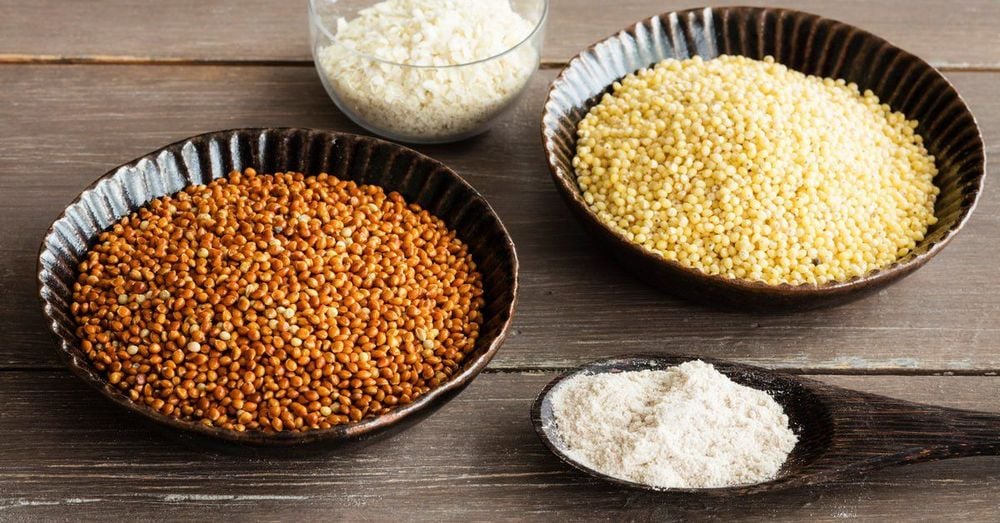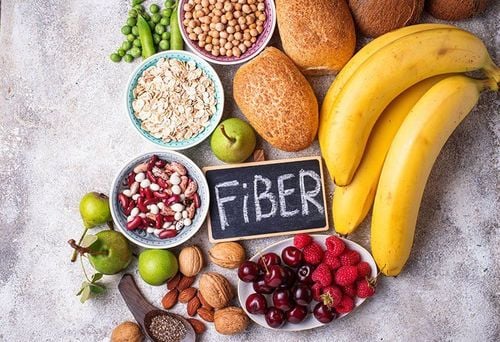This is an automatically translated article.
Millet is a whole grain that is high in protein, antioxidants and nutrients. It may offer many health benefits, such as helping to lower blood sugar and cholesterol levels. Plus, the grain is gluten-free, making it a great choice for people with celiac disease or following a gluten-free diet.
1. Millet
Millet or millet belongs to a type of cereal grain in the grass family. Millet is widely consumed in developing countries throughout Africa and Asia. Although millet may be similar to other grains, the nutritional profile of millet is similar to that of sorghum and other grains.
Millet has become popular in the West because of its gluten-free composition and also boasts high levels of protein, fiber and antioxidants. Therefore, millet is classified as a healthy cereal for daily diets.
2. Attributes and classification of millet
Millet is structured like a small, round grain grown in India, Nigeria, and other Asian and African countries. Millet is considered an ancient grain, used both for human consumption and as feed for livestock and poultry.
Millet has many advantages over other crops, including drought and pest resistance. Millet can survive in harsh environments and poor soil fertility. These benefits stem from the genetic composition and physical structure of millet.
Although all varieties of millet belong to the grass family, they differ in color, shape and species.
This cereal is also divided into two categories: Main millet and minor millet, of which the main millet belongs to the most common variety, including: Pearl, mink tail, proso (or white), finger (or ragi) . Small millet or sub millet include: Kodo, Guinea, brown, fonio, adlay.
The most widely produced pearl millet for human consumption. However, all varieties are well known for the high nutritional value and health benefits of this healthy cereal.

Có nhiều loại kê khác nhau
3. Nutritional composition of millet
Millet is rich in starch. Notably, the nutritional composition of millet also contains a number of vitamins and minerals. 174 grams package of cooked millet includes:
Calories: 207 Carbs: 41 grams Fiber: 2.2 grams Protein: 6 grams Fat: 1.7 grams Phosphorus: 25% of the Daily Value (DV) Magnesium : 19% DV Folate: 8% DV Iron: 6% DV The nutritional profile of millet provides more essential amino acids than most other grains. Furthermore, millet boasts the highest calcium content of all grains, providing 13% of the DV per 1 cooked cup (100 grams).
Calcium is needed for healthy bones, blood vessels and muscle contractions as well as proper nerve function.
4. Benefits of millet
Millet is rich in nutrients and plant compounds found in millet. Therefore, millet can bring many health benefits.
4.1.Antioxidant rich millet
Millet contains quite a rich composition of phenolic compounds, especially ferulic acid and catechins. These molecules act as antioxidants to protect your body from harmful oxidative stress. Studies conducted in rats have linked ferulic acid with rapid wound healing, skin protection, and anti-inflammatory properties. Meanwhile, the compound catechin binds with heavy metals in the body's blood to prevent metal poisoning.
All millet varieties contain antioxidants, darker varieties - such as finger millet, proso and mink tail will be white or yellow.
4.2. Millet can help control blood sugar
Millet is rich in fiber and non-starchy polysaccharides, two indigestible carbs that help control blood sugar levels. Millet is also one of those grains with a low glycemic index (GI), which means it's unlikely to raise your blood sugar. Thus, millet is considered as an ideal cereal for people with diabetes.For example, a study in 105 people with type 2 diabetes determined that replacing a rice breakfast with a meal made with millet helped reduce post-meal blood sugar levels.
Insulin resistance, a marker for type 2 diabetes. This condition occurs when your body stops responding to the hormone insulin, which helps regulate blood sugar levels.
Furthermore, in a 6-week study in diabetic rats, a diet containing 20% millet seed reduced fasting blood sugar while also lowering triglyceride and cholesterol levels.

Ngũ cốc millet giúp kiểm soát lượng đường trong máu
4.3. Millet can help lower cholesterol
Millet contains soluble fiber, which creates a viscous substance in your intestines, which helps lower cholesterol levels.
A study was done on rats that had type 2 diabetes and fed them a high-fat diet with millet protein. The results resulted in a decrease in triglyceride levels and a significant increase in adiponectin and HDL cholesterol levels, compared with the control group.
Adiponectin-hormone has anti-inflammatory effects, supports heart health and stimulates fatty acid oxidation. Levels of this process are usually lower in people with obesity and type 2 diabetes.
4.4 Suitable for a gluten-free diet
Millet is a gluten-free grain, making it a viable option for people with celiac disease or those following a gluten-free diet.
Gluten, a protein that occurs naturally in grains like wheat, barley, and rye. People with celiac disease or gluten intolerance must avoid gluten because it causes harmful digestive symptoms, such as diarrhea and malabsorption of nutrients.
5. Potential disadvantages of millet
Although millet offers many health benefits, millet also contains antinutrients - compounds that block or reduce the body's absorption of other nutrients and can lead to deficiencies .
One of the antinutrient compounds, such as phytic acid, can contribute to the absorption of potassium, calcium, iron, zinc and magnesium. However, when building a balanced diet with millet will minimize the chance of any possible effects on the body.
Other nutrient-locking components present in millet are known as: goitrogenic polyphenols that can impair thyroid function, cause goiter, this is a condition that enlarges your thyroid gland leading to neck swelling. However, the side effects of millet are only related to excess polyphenol intake.
For example, one study in people with goiter determined that goiter was significantly more common when millet provided 74% of a person's daily calories, compared with just 37% of daily calories. their .
Furthermore, you can greatly reduce the antinutrient content of millet by soaking it overnight at room temperature, then draining and rinsing before cooking.
In addition, sprouting of millet can also reduce the content of antinutrients. Some grocers sell sprouted millet, or you can grow your own to help reduce the side effects of millet. Do this by placing the soaked millet in a glass jar and securing it with a cloth with an elastic band.
6. How to prepare and eat millet
Millet can be a good substitute for rice when cooked. To prepare, just add 480 ml of water or broth for 174 grams of raw millet. Bring to a boil, then simmer the millet and water mixture for 20 minutes.
Remember to soak it overnight before cooking to reduce its antinutrient content. You can also roast millet in a pan before cooking to enhance its nutty flavor.
Millet is also sold as a powder. Research shows that using baking ingredients with millet flour significantly enhances their nutritional profile by increasing their antioxidant content.
In addition, millet is also processed to make snacks, such as pasta and nondairy probiotic drinks. Fermented millet acts as a natural probiotic by providing live microorganisms that are beneficial to your health. Or you can use millet as a breakfast porridge, side dish, salad addition, or cookie or cake ingredient.
Please dial HOTLINE for more information or register for an appointment HERE. Download MyVinmec app to make appointments faster and to manage your bookings easily.
Reference source: healthline.com













